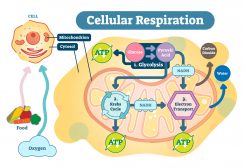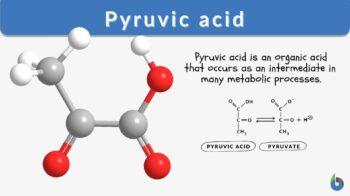
Pyruvic acid
n., [pʌɪˌruː.vɪk ˈas.ɪd]
Definition: organic liquid produced by the breakdown of carbohydrates and sugars during glycolysis
Table of Contents
What is Pyruvic Acid?
Pyruvic acid is an organic acid that occurs as an intermediate in many metabolic processes. It occurs in all living cells. Pyruvic acid, formerly called pyro racemic acid, was first obtained by Jones Jacob Berzelius in 1835 by the dry distillation of tartaric acid.
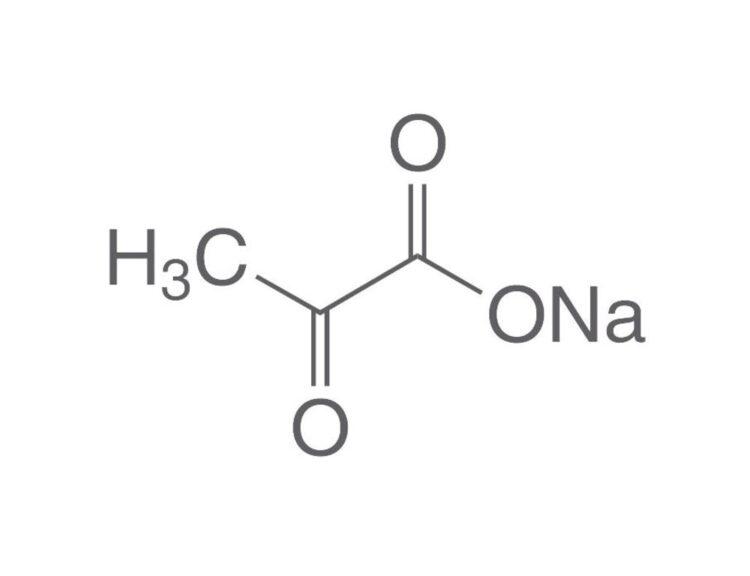
Some chemical properties are given below:
- Pyruvic acid formula is C3H4O3.
- pKa of pyruvic acid: 2.45.
- Pyruvic acid is derived from glucose
- The primary pyruvic acid function is to serve as the transporter of carbon atoms into the mitochondrion for complete oxidation into carbon dioxide (CO2).
- Where does oxidation of pyruvate occur? The oxidation of pyruvate occurs in the mitochondria, particularly in the mitochondrial matrix.
- Examples: 4, 6-pyruvated d-Glc, d-Man, and d-Gal, 3, 4-pyruvated d-Gal and l-Rha, and 2, 3-pyruvated d-Gal and d-GlcA.
Pyruvic acid is a water-soluble, organic liquid that is produced by breaking down carbohydrates and sugars through the glycolytic pathway (glycolysis). If oxygen is available, pyruvic acid is converted to acetyl coenzyme A that enters the energy-producing pathway, the Krebs cycle. If oxygen is lacking, pyruvic acid is converted to lactic acid. This compound is also used in the body to synthesize alanine. Etymology: PYR(O)– + Latin ūva, grape (from its being produced by the dry distillation of racemic acid, originally derived from grapes) + –ic. Chemical Formula: CH3COCO2H. Synonym: acetylformic acid, pyroracemic acid. See also: pyruvate, glycolysis, cellular respiration.
Chemistry
Pyruvic acid is a colorless liquid with a smell like that of acetic acid and is miscible with water. Pyruvic acid is prepared by heating a mixture of tartaric acid and potassium hydroxide sulfate in the laboratory.
CH3COCl + KCN → CH3COCN + KCL
CH3COCN → CH3COCOOH
Biochemistry
Pyruvate is an important chemical compound in biochemistry. Many would use the terms “pyruvate” and “pyruvic acid” interchangeably. In particular, pyruvate is defined as a 2-oxo monocarboxylic acid anion; pyruvic acid is its conjugate base that arises from the deprotonation of carboxylic groups.
What is pyruvic acid used for?
Pyruvic acid is used to supply energy to the cells when the glucose route is not available such as when muscles are short of oxygen due to excessive physical activity. Pyruvic acid ferments to produce lactic acid that further converts to lactose to provide energy. In presence of oxygen, pyruvic acid uses the citric acid cycle, also known as the Kerbs cycle, to produce energy.
In metabolic pathways, pyruvate play is a key role. Pyruvate can be converted into carbohydrates via gluconeogenesis, to fatty acids, or, to the amino acid alanine, or to ethanol. Hence, it unites several key metabolic processes.
Pyruvic acid production by glycolysis
The production of pyruvic acid starts with the glycolysis of glucose. Phosphoenolpyruvate (PEP) is converted to pyruvate by pyruvate kinase in glycolysis. Pyruvic acid glycolysis is a highly exothermic and irreversible reaction
What does pyruvic acid do in glycolysis?
Pyruvic acid is the formed product (end) of glycolysis, a process that breaks down glucose (a 6-C molecule) into two molecules of pyruvate (a 3-C molecule) and simultaneously yields adenosine triphosphate (ATP), which powers cellular function.
How does pyruvic acid make ATP?
Krebs’s cycle completely oxidized the carbon atoms in the pyruvic acids producing a small amount of ATP and reducing NAD (Nicotinamide adenine dinucleotide) and FAD (Flavin Adenine Dinucleotide.) into higher energy forms. In the ETS those higher energy forms are cashed in, producing ATP (Murto et al., 1989).
EMP pathway
In the EMP pathway, glucose 6-C is first converted in a series of reactions to form fructose-1,6-bisphosphate, which is cleaved to form two interconvertible sugars. They enter a common set of catabolic reactions to form two pyruvate molecules.
Decarboxylation to acetyl CoA (coenzyme A)
Pyruvate decarboxylation, also referred to as link reaction, is the conversion of pyruvate into acetyl coenzyme A in the presence of the enzyme pyruvate dehydrogenase complex.
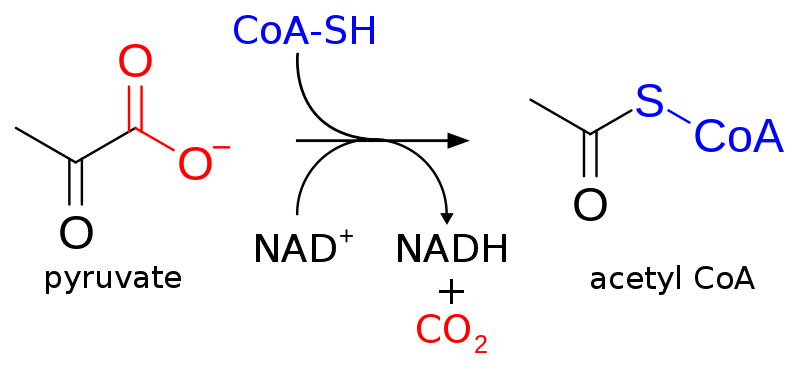
Carboxylation to oxaloacetate
Pyruvate carboxylase is found on mitochondria and converts pyruvate into oxaloacetate. Biotin is initially carbonylated at the BC active site by ATP and bicarbonate. The carboxyl group is subsequently transferred by carboxy biotin to a second active site in the CT domain, where pyruvate is carboxylate to generate oxaloacetate.

Oxidation of Pyruvate
1. A carboxyl group is removed from pyruvate and released as CO2.
2. The 2-carbon molecule from the first step is oxidized, and NAD+ accepts the electrons to form NADH.
3. The oxidized 2-carbon molecule, an acetyl group, is attached to Coenzyme A to form acetyl CoA.
What is the role of pyruvic acid in fermentation?
The benefit of pyruvic acid is that if oxygen is not available to the cells, it undergoes a fermentation reaction to produce lactic acid, which is further converted to lactose. Fermentation will replenish NAD+ from the NADH + H+ produced in glycolysis (Kappes et al., 2021).
- Alcohol fermentation: One type of fermentation of pyruvate is alcohol fermentation. In the first step, pyruvate is decarboxylated to form acetaldehyde. Hydrogen atoms from NADH + H+ are then used to help convert acetaldehyde to ethanol. NAD+ result.
- Lactate fermentation: Lactate fermentation occurs in some organisms such as certain bacteria. Two pyruvates are converted to two lactic acid molecules, which ionize to form lactate. In this process, two NADH + H+ are converted to two NAD+.
Transamination to alanine
Transamination to alanine occurs in the condition when pyruvate is used as an amino group acceptor. This occurs when muscles degrade. The amino acid produced is nonessential. The extrahepatic tissue is used for the production of amino acids that are further used as energy. This is performed by the enzyme alanine transaminase (ALT).
Reduction to lactate
The reduction to lactate happens when pyruvate goes directly for oxidation in the mitochondrion matrix. However, during strenuous exercise, the energy demands exceed the oxygen supply in the ETC hence causing a back-up in the electron transport chain. NADH+H+ is inhibited and therefore donates its hydrogen to pyruvate, reducing pyruvate temporarily to lactate. Lactate dehydrogenase LDH catalyzes the conversion of pyruvate to lactate also with the regeneration of NADH to NAD+ (Maleki & Eiteman 2017).
Pyruvate to lactate mechanism
Pyruvate can convert to lactate in conditions such as when muscles are short of oxygen. Two molecules of pyruvates will first convert to lactic acid molecules which further ionize to form lactate.
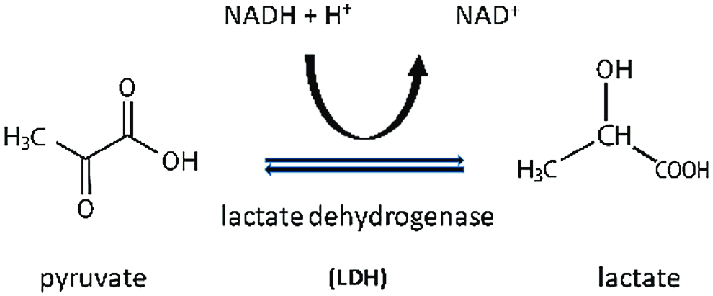
Environmental chemistry
Bioorganic aerosols are a major part of the environment. In secondary organic aerosols, Pyruvic acid is one of the carboxylic acids that are abundantly present in bioorganic aerosols.
Uses:
Pyruvic acid is used for weight loss, obesity, high cholesterol, cataracts, cancer and helps in improving athletic performance. Some people apply pyruvic acid on the skin to reduce wrinkles and aging (it is applied on the face and used as a facial peel). Pyruvic acid is used in different pathways, such as alcoholic fermentation, lactic acid fermentation, and aerobic respiration.
Biological Importance
Pyruvate is common to five metabolic processes. These are
(1) Fermentation of sugar to ethyl alcohol by yeast.
(2) Fermentation of sugar to lactic acid in muscle.
(3) The oxidation of sugar to carbon dioxide and water by way of the Krebs cycle.
(4) Conversion of sugar to fatty acids.
(5) Conversion of sugar to amino acids (such as alanine) which are the building blocks of proteins.
Low Pyruvic Acid
Pyruvate carboxylase deficiency (PC deficiency) is a rare genetic disorder present at birth characterized by failure to flourish, delay in development, and a failure of the body to produce the necessary fuels for energy and neurotransmitters important for brain function (Li et al., 2001).
Watch this vid to find out more about the metabolic fate of pyruvic acid.
Try to answer the quiz below to check what you have learned so far about pyruvic acid.
References
- Murto, J., Raaska, T., Kunttu, H., & Räsänen, M. +. (1989). Conformers and vibrational spectra of pyruvic acid: an ab initio study. Journal of Molecular Structure: THEOCHEM, 200, 93-101.
- Kappes, K. J., Deal, A. M., Jespersen, M. F., Blair, S. L., Doussin, J. F., Cazaunau, M., & Vaida, V. (2021). Chemistry and photochemistry of pyruvic acid at the air–water interface. The Journal of Physical Chemistry A, 125(4), 1036-1049.
- Maleki, N., & Eiteman, M. A. (2017). Recent progress in the microbial production of pyruvic acid. Fermentation, 3(1), 8.
- Li, Y., Chen, J., & Lun, S. Y. (2001). Biotechnological production of pyruvic acid. Applied microbiology and biotechnology, 57(4), 451-459.
- Tech Science Press. (2021). FIGURE 2. Lactate production under anaerobic condition. Under aerobic… ResearchGate; ResearchGate. https://www.researchgate.net/figure/Lactate-production-under-anaerobic-condition-Under-aerobic-conditions-pyruvate-is_fig2_349893159
- nicolenk. (2013, April 14). Biochemistry is a good thing. Biochemistry Is a Good Thing; Biochemistry is a good thing. https://biochemistryisagoodthing.wordpress.com/
- Pyruvic acid sodium salt, 250 g | A to Z | Chemikalien | Carl Roth – France. (2019). Carlroth.com. https://www.carlroth.com/fr/en/a-to-z/pyruvic-acid-sodium-salt/p/8793.2
©BiologyOnline.com. Content provided and moderated by Biology Online Editors.


